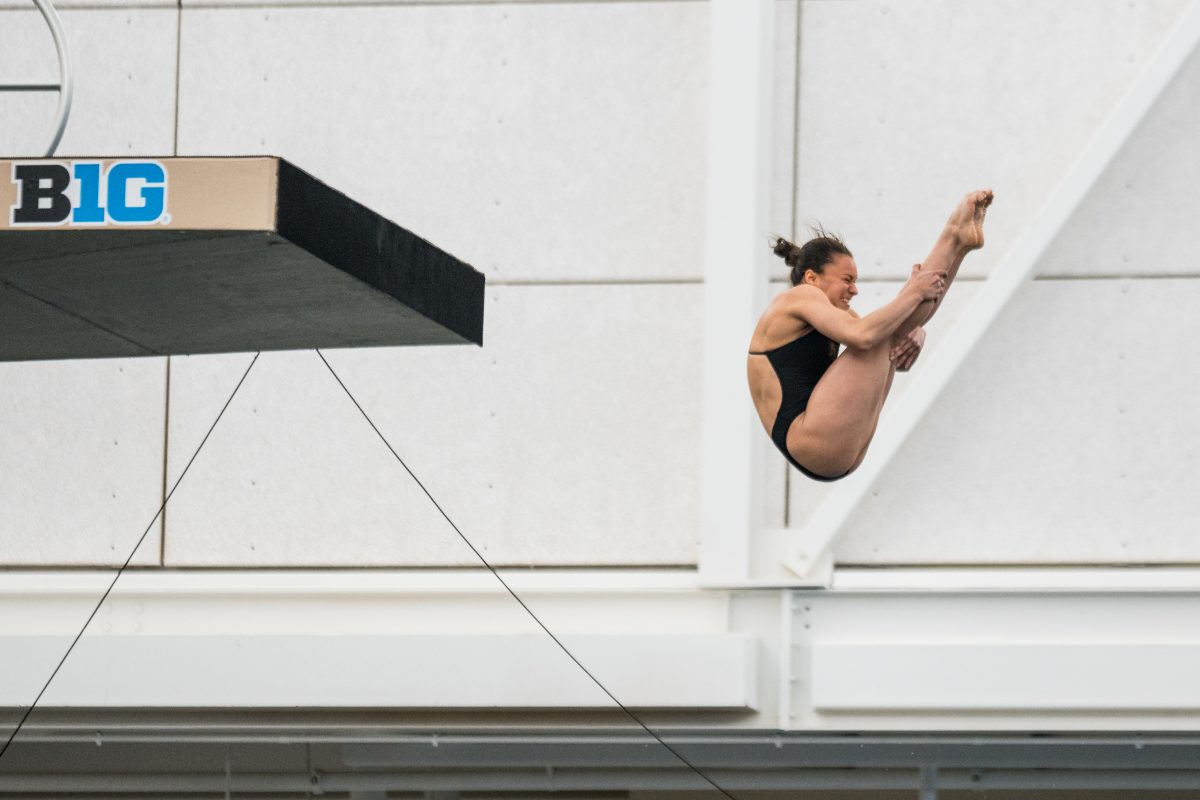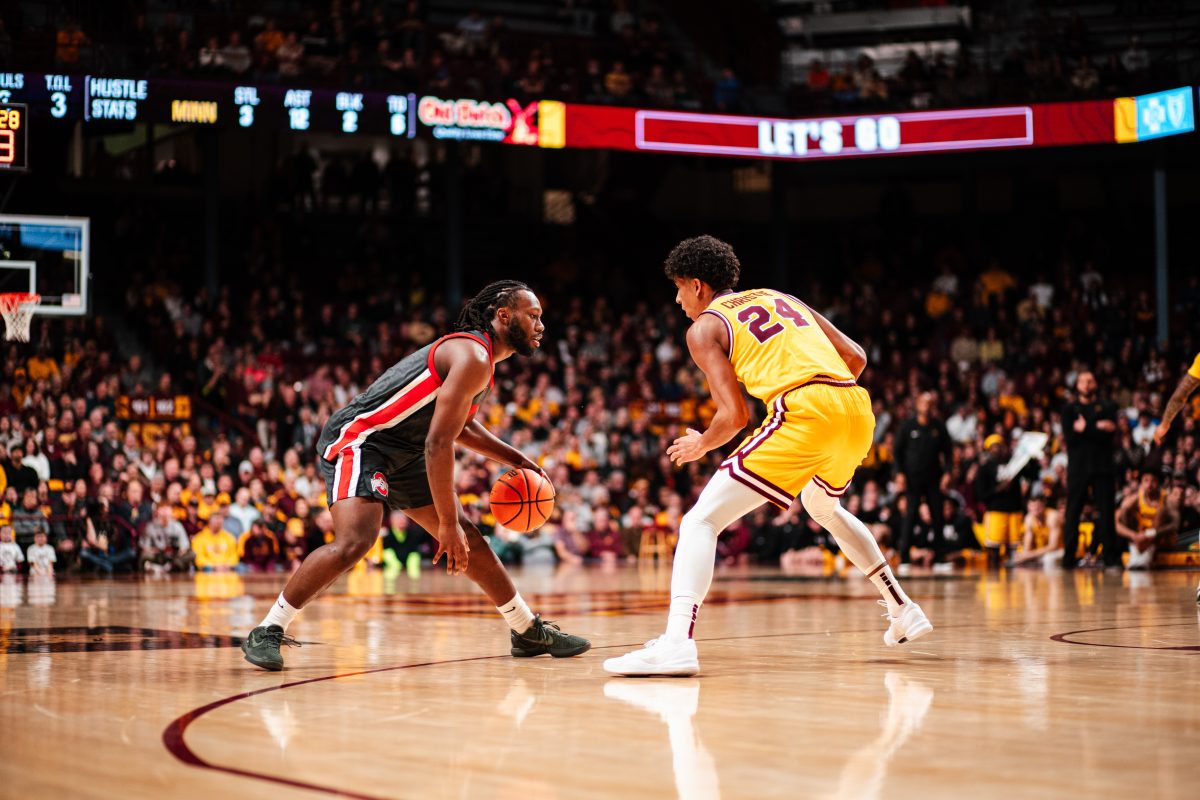Eight Big Ten programs, not including Minnesota, awarded four-year scholarships to student-athletes on National Signing Day on Feb. 1 — but the fate of their long-term financial aid is being put to a vote.
NCAA presidents will conclude a week of online voting Thursday for an override proposal on the multi-year scholarship legislation that was approved in October. Previously, schools have only been able to sign student-athletes to one-year, renewable scholarships, which have been in place since 1973.
Multi-year scholarships were enacted in order to give recruits more security when signing scholarships.
If the proposal survives the override, multi-year scholarships would remain optional for schools.
It will take 222 schools out of 355 in Division I to override the measure.
If it doesn’t survive, there will be plenty of renegotiating for the number of recruits in the NCAA who have already signed multi-year scholarships.
“The University of Minnesota, along with schools in the Big Ten … believe that multi-year scholarships are appropriate in today’s world,” athletics director Joel Maturi said. “Our scholarships have been year-to-year, but they have been [in a sense] multi-year as well because we’ve not been accustomed to reducing or taking away aid.”
In late December, 82 D-I programs had requested to override the rule and it was tabled until the NCAA D-I Board of Directors met in mid-January. The minimum number of schools needed to consider an override on this proposal was 75.
The board reaffirmed its backing of multi-year scholarships last month and scheduled a vote for February on the provision — one that NCAA President Mark Emmert staunchly supports.
“[An override] will take away the opportunity for multi-year support for thousands of student-athletes,” Emmert wrote in a letter to all D-I presidents, published at CBSSports.com. “As we are a presidentially led Association, it is important that you direct what the vote of your institution will be. I encourage you to defeat the override of this proposal.”
Critics of the measure, like Boise State University, have said that four-year scholarships would be a “recruiting disaster.”
“There is never a guarantee that the incoming student-athlete will be a good fit for the program and the institution,” the school stated in its override request, according to the Associated Press. “If it is a poor fit, the program is put in a difficult situation to continue to keep a student-athlete on scholarship.”
However, proponents of the legislation are fighting against the practice of “running off” student-athletes who don’t fit when a new coach takes over.
“I view it as a good thing to give student-athletes some security and to know their recruitment is going to last [all four years],” said Perry Leo, faculty athletics representative at the University of Minnesota. “And that it isn’t going to be cut short because of their performance on the field, court, etc.”
Under the current proposal, multi-year scholarships could still be revoked due to academic or off-field issues.
The Big Ten was the only conference to urge its member schools to switch to multi-year scholarships. Ohio State, Michigan, Penn State, Michigan State, Wisconsin, Iowa, Illinois and Northwestern all reportedly awarded four-year grants to recruits on National Signing Day.
$2,000 stipend update
The week of voting comes at a time of uncertainty for another provision that was adopted in August when the NCAA held a retreat to address concerns about the operation of D-I athletics.
The NCAA’s Student-Athlete Well-Being work group will decide Friday whether or not to recommend the newest adjustments it made to the $2,000 stipend provision to the NCAA Board of Directors. The newest proposal, obtained by the Chronicle of Higher Education, now requires athletes, both full- and half-scholarship, to prove financial need before they could qualify for the proportional stipend.
The original proposal would have allowed colleges to provide the additional money to any full-scholarship athlete, despite need. It was approved in October and later suspended because enough programs requested it be overridden. The minimum number of institutions to consider overriding was 125.
“The concern was, by doing that, you were going to provide funds to some student-athletes who don’t need the additional monies,” said Percy Bates, the faculty athletics representative at the University of Michigan. “The committee wasn’t comfortable with that.”
Full-scholarship athletes would still be eligible for $2,000 if they can prove need. Half-scholarship athletes would also be eligible for up to $1,000, based on the same need.
The student-athlete’s financial need would be calculated by multiple factors — that will be part of the vote on Friday — and will be measured against the school’s cost of attendance.
“I think it’s harder to do administratively,” Leo said of the stipend moving to need-based. “But, I think it’s what needs to be done to get the money where it needs to be.”
Many concerns, including Title IX compliance, how the stipend would apply to partial-scholarship sports and when the rule would go into effect, rose around the initial stipend proposal.
But these changes could help ease the financial burden such a stipend would place on the lesser-off athletic departments. Fewer student-athletes would be eligible for the extra aid, because not all full-scholarship student-athletes would be simply handed the stipend.
“If we’re going to award additional dollars to scholarship student-athletes, we need to be as equitable and fair as we possibly can,” Maturi said. “I don’t think the initial piece of legislation was very good.
“I don’t mean to single out a sport, but the very well-off-to-do parents of the women’s tennis team get the stipend where as the very-needy track athlete on half a scholarship gets nothing? That didn’t make a lot of sense to me.”
The NCAA D-I Board of Directors delayed the implementation of the $2,000 stipend in January and if the Student-Athlete Well-Being working group approves these changes, they will still need to be endorsed by the Board of Directors when they meet in April.
If done, opponents of the stipend would then have a second chance to force an override vote, possibly delaying the legislation even further.
However, Leo said the changes wouldn’t solve everything. With as much as $2,000 going to a single student-athlete, there will still be the programs that can’t afford it.
“It’s going to cost a lot of schools a lot of money,” Leo said. “But that’s a part of the arms race in college athletics. I think that’s something that has to be concerning.”






















